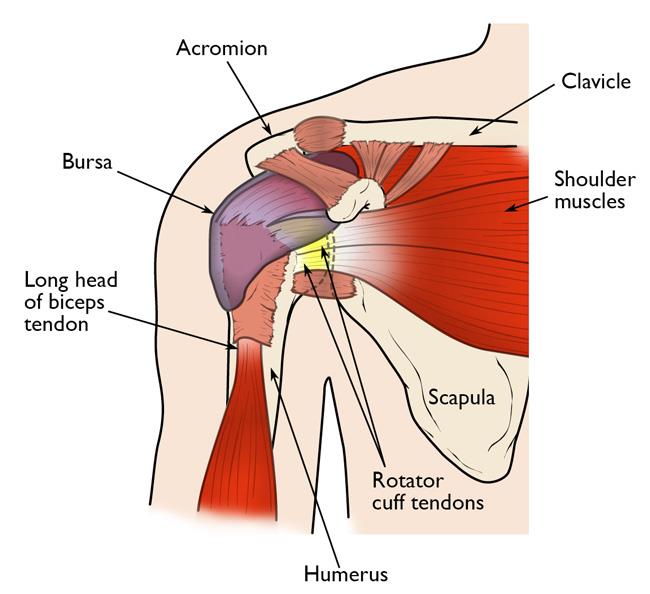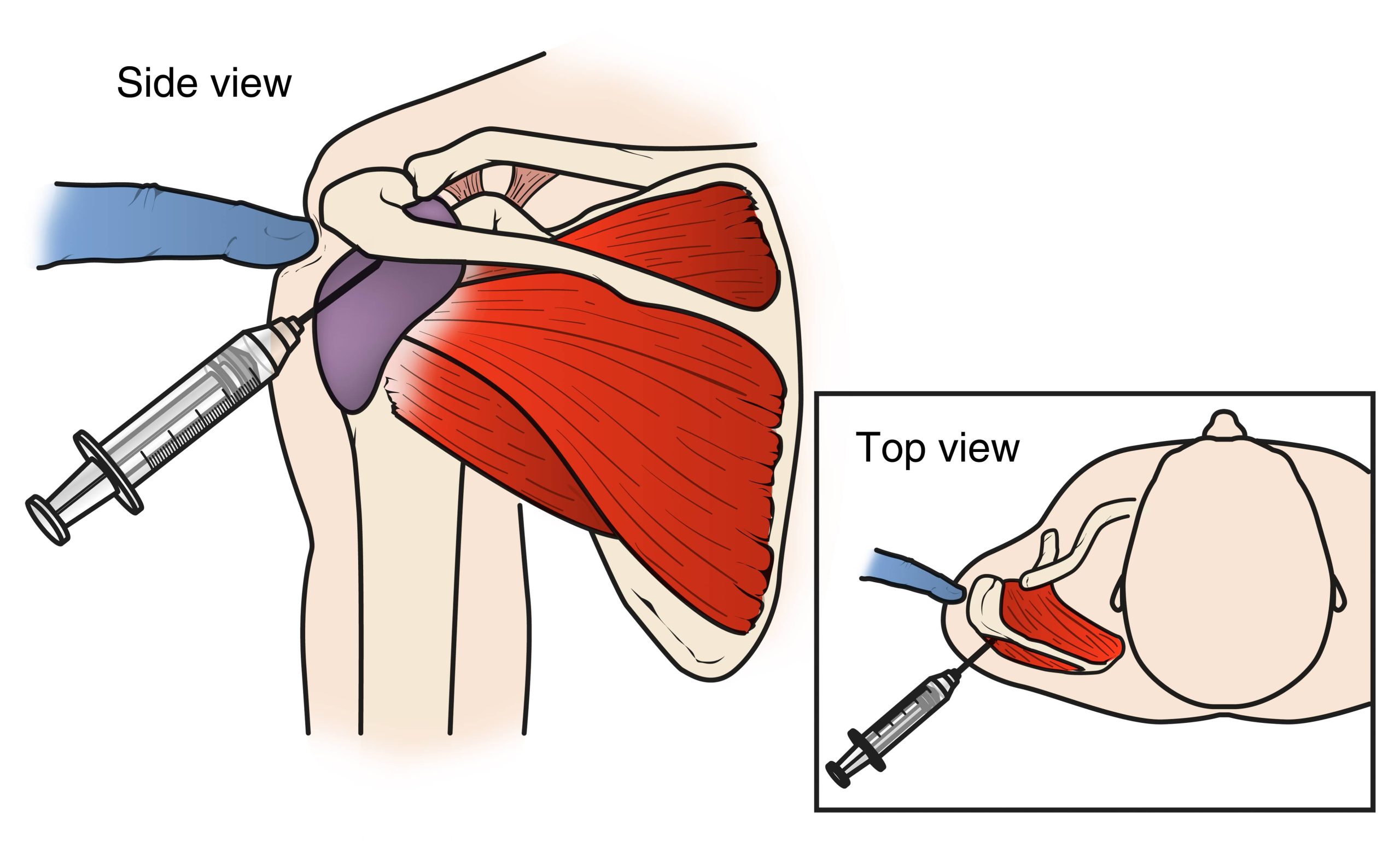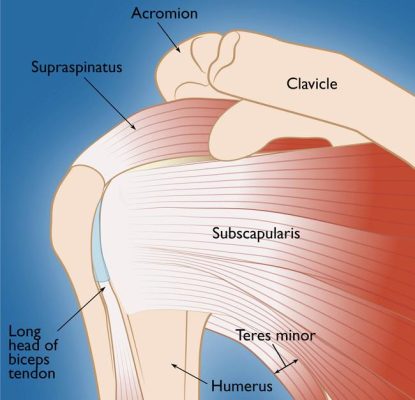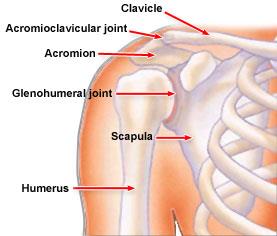Musculoskeletal Disorders
Back & Neck
Foot & Ancle
Hand & Wrist
Hip & Pelvis
Knee & Lower Leg
Athletic injuries
Shoulder Impingement Syndrome
One of the most common physical complaints is shoulder pain. The rotator cuff is a frequent source of pain in the shoulder.
One of the most common physical complaints is shoulder pain. The rotator cuff is a frequent source of pain in the shoulder.
Anatomy
The shoulder is made up of 3 bones: humerus, scapula, and the clavicle.
Your arm is kept in the shoulder socket by the rotator cuff. These muscles and tendons form a covering around the head of the upper arm bone and attach it to the shoulder blade.
There is a bursa between the rotator cuff and the acromion. The bursa allows the rotator cuff tendons to glide freely when you move your arm.

This illustration of the shoulder highlights the major components of the joint.
The rotator cuff is a common source of pain in the shoulder. Pain can be the result of:
- Tendinitis. The rotator cuff tendons can be irritated or damaged.
- Bursitis. The bursa can become inflamed and swell with more fluid causing pain.
- Impingement. When you raise your arm to shoulder height, the space between the acromion and rotator cuff narrows. The acromion can impiges against the tendon and the bursa, causing irritation and pain.
- The goal of treatment is to reduce pain and restore function.
-
Nonsurgical Treatment
- In most cases, initial treatment is nonsurgical.
- Rest.
- Non-steroidal anti-inflammatory drugs.
- Physical therapy. .
- Once your pain is improving, your therapist can start you on a strengthening program for the rotator cuff muscles.
Steroid injection. Cortisone is a very effective anti-inflammatory medicine. Injecting it into the bursa beneath the acromion can relieve pain.

A cortisone injection may relieve painful symptoms.
If nonsurgical treatment does not relieve pain, is recommended surgery.
The goal of surgery is to create more space for the rotator cuff-remove the inflamed portion of the bursa and remove part of the acromion. This is sub acromial decompression. That usually done with an arthroscopic technique of the shoulder.



 Ελληνικά
Ελληνικά
